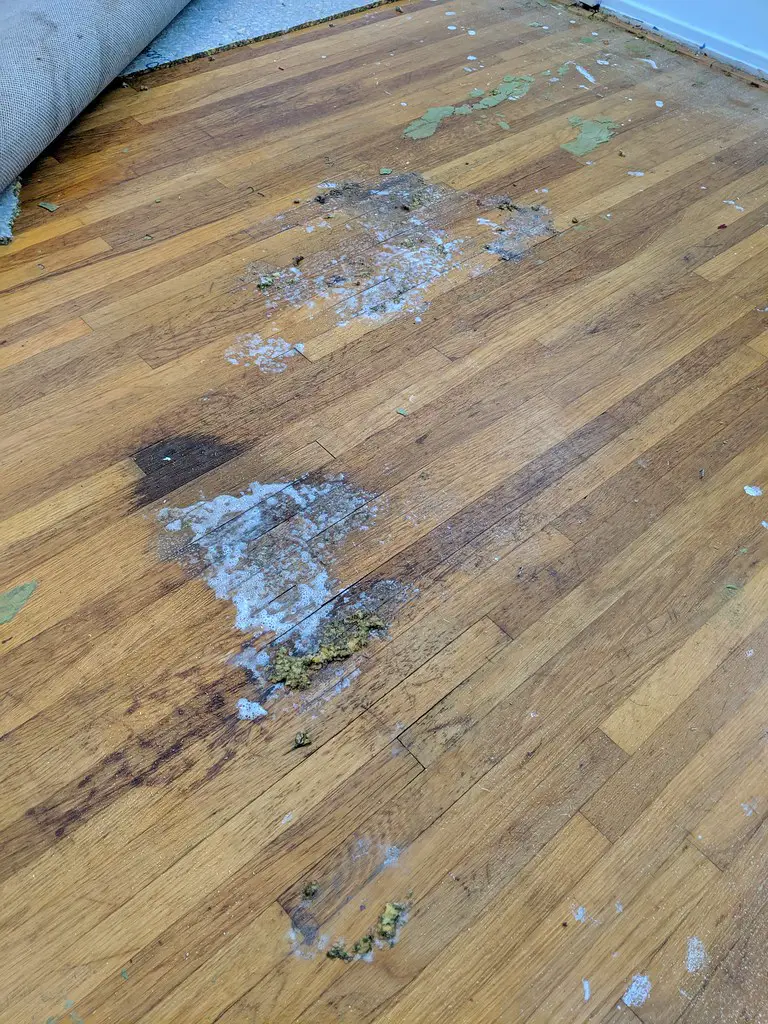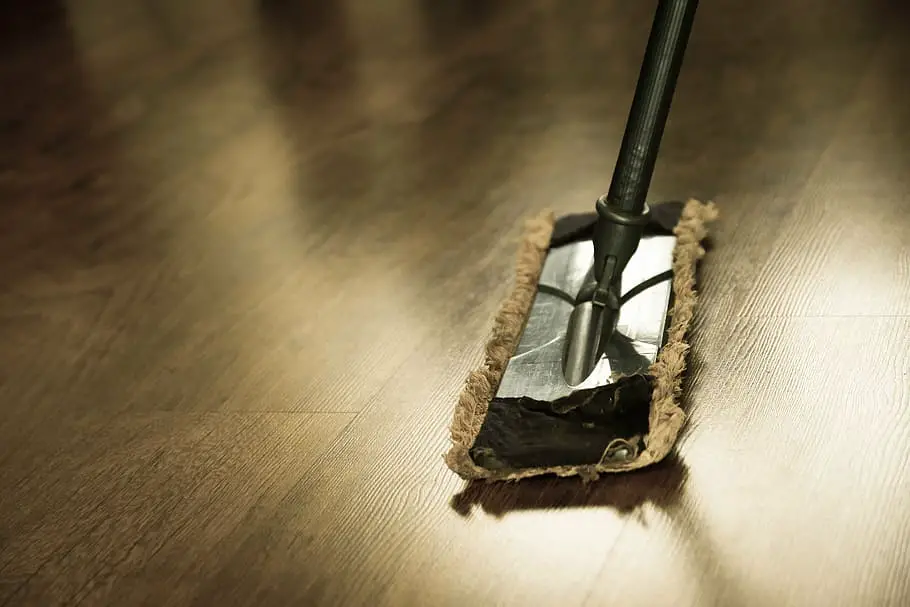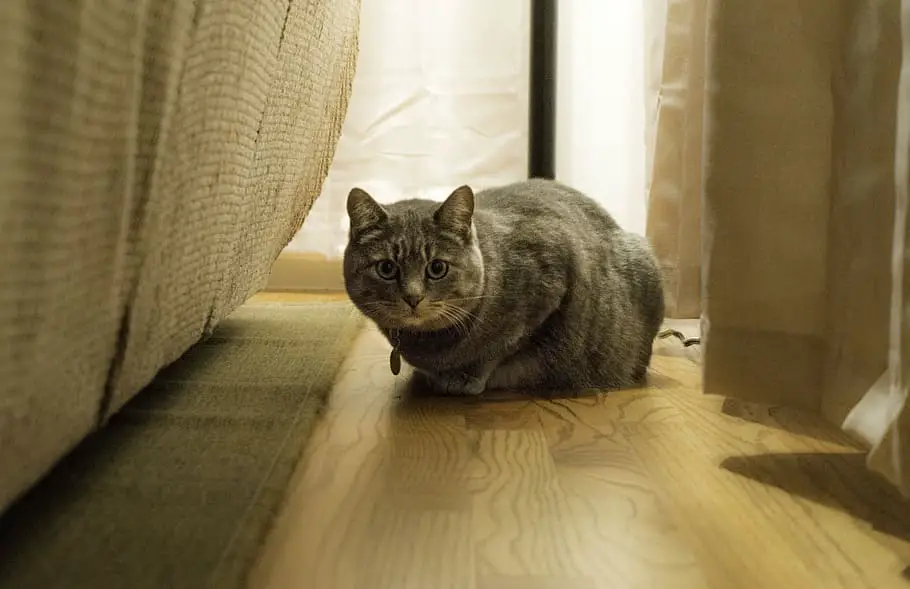Cat urine is one of the most difficult substances to remove from surfaces. This is especially true when it comes to hardwood flooring, which can absorb smells and become discolored if not properly cleaned.
While there are many products on the market designed to help with this issue, sometimes the best solution is just a little elbow grease and know-how. Here we outline some of the tips and tricks from the experts on how to get cat pee out of a hardwood floor.
The problem of cat pee on hardwood floors
Cat urine is not only smelly, but it also contains ammonia which can cause discoloration and damage to hardwood floors.
If not cleaned properly and in a timely manner, the urine will have soaked into the wood fibers and become almost impossible to remove without damaging the floor. Therefore, it’s important to act quickly when dealing with a pet accident on your hardwood floor.
Why it’s important to remove cat urine promptly
The most effective way to remove cat urine from a hardwood floor is to act quickly. Once the urine has been absorbed into the wood, it’s far more difficult to remove without damaging the floor or leaving unsightly stains.
The longer you wait to clean up the mess, the harder it will be to get rid of it completely.
Identifying Cat Pee Stains
How to spot fresh and old pee stains
Fresh cat urine will typically leave a damp spot on the floor. The affected area will also usually have a distinctive smell and be slightly discolored. Old stains, on the other hand, tend to look dry with no obvious wet spots.
These types of stains may also lack the strong odor associated with fresh urine.
The dangers of untreated cat pee stains on hardwood floors
Untreated cat pee stains on hardwood floors pose several risks. Over time, the ammonia in cat urine can extensively damage the wood, causing it to warp or rot. This not only diminishes the aesthetic appeal of your floor but can also reduce the lifespan of the wood significantly.
Additionally, if the urine seeps into the cracks and crevices of the wood, it can lead to the growth of mold and mildew, which are health hazards. Lastly, the persistent odor of untreated cat pee can permeate your home and become unpleasant for inhabitants and visitors alike.
Therefore, it’s crucial to address these stains promptly to protect the integrity of your flooring and ensure a healthy living environment.
Tools and Materials Needed
List of required items to effectively remove cat pee
- Cold water
- White vinegar
- Enzyme cleaner
- Soft, white cloths or paper towels
- Rubber gloves
- Bucket of warm water with a few drops of dish soap
- A vacuum cleaner with a brush attachment
- Fans for drying the area (optional)
Safety equipment to protect yourself during the cleanup process
- Goggles
- Respiratory protection mask
- Gloves to protect your hands from coming into contact with the cat urine
Step-by-Step Guide on How to Remove Cat Pee from Hardwood Floors
1. Immediate Actions to Take When You Spot Fresh Pee
As soon as you notice a fresh cat urine spot on your hardwood floor, immediate action is required. Firstly, put on your gloves and get a soft, white cloth or a handful of paper towels. Blot the wet spot as much as possible to soak up the urine; avoid rubbing as it can push the urine deeper into the wood.
Then, prepare a mixture of white vinegar and cold water (a 50/50 ratio works well) in a bucket. Soak a clean cloth in this solution and wring out the excess liquid. Gently blot the stained area with this damp cloth, ensuring the floor doesn’t become overly wet.
The vinegar will help neutralize the urine smell. After this, use an enzyme cleaner as per the product’s instructions. These cleaners break down the proteins in cat urine, further eliminating the odor and stain. After applying, let it sit for the recommended time before blotting it up.
Finally, dry the area thoroughly using a fan or let it air dry. This immediate action helps prevent permanent staining and odor and mitigate the damaging effects of cat urine on hardwood floors.
2. Detailed process for tackling dried, old stains

In the case of dried or old cat pee stains on your hardwood floor, the process is a bit different and requires more effort. Begin by wearing your safety equipment.
Then, mix a solution of hydrogen peroxide and water (equal parts) in a bucket. Before proceeding further, test this solution on a hidden area of your floor to ensure it doesn’t discolor your wood.
If safe, dampen a cloth with this solution and blot the stained area; avoid soaking the wood. Allow the hydrogen peroxide to sit on the stain for about 10 minutes to break down the stain and odor.
Next, use an enzyme cleaner specifically designed for pet stains. Follow the instructions on the product label; typically, this involves applying the cleaner to the stain, allowing it to sit for a specified time, and then blotting it up.
For stubborn stains, you may need to lightly sand the area with fine-grit sandpaper and then refinish it. Remember to always work with the grain of the wood to prevent scratching. After sanding, vacuum the dust and apply a wood stain that matches your floor.
Allow it to dry, then apply a coat of varnish or polyurethane for protection.
After each step of the process, ensure the area is thoroughly dried using fans or allowing it to air dry. This process may be time-consuming but is necessary to restore the beauty of your hardwood floors and eliminate the lingering smell of cat urine.
3. Tips for Ensuring the Thorough Removal of Stain and Odor

To ensure the complete removal of stains and odors, there are additional steps you can take.
Repeat the Cleaning Process: For stubborn stains and strong odors, it may be necessary to repeat the cleaning process a few times. This will help break down any remaining urine particles and remove the scent thoroughly.
Use Odor Neutralizers: An odor neutralizer can be very effective in eliminating the persistent smell of cat urine. Choose a product specifically designed for pet odors and follow the instructions on the label.
Ventilate the Area: Ensuring good airflow in the area helps speed up the drying process and removes odor. Open windows and doors, and use fans if necessary for increased ventilation.
Regularly Inspect the Area: Regularly check the stained area over the next few days. If the stain reappears or the odor returns, repeat the cleaning process.
Consider Professional Cleaning Services: If the stain and odor persist, consider hiring a professional cleaning service. Professionals have access to high-grade cleaning products and equipment that can effectively remove stubborn stains and odors.
Expert Tips for Preventing Future Incidents
How to deter your cat from peeing on the floor
Although removing cat pee from hardwood floors is important, it’s also important to take steps to prevent future incidents. Here are a few tips for deterring your cat from urinating on the floor:
Make sure the litter box is kept clean and accessible at all times. Check the box frequently to ensure that it is not clogged, full, or has not been used by another pet.
Provide plenty of scratching posts and other toys for your cat to play with, as this will help keep them entertained and away from areas you want to protect.
If possible, create separate litter boxes for each cat in the house – this will prevent overcrowding in one box which could cause cats to “mark” the area with urine.
Consider using an enzymatic cleaner or a “cat deterrent spray” in areas where cats may have previously urinated – this will help rid the area of any lingering odors that could spark a second accident.
Place some aluminum foil over areas you want to protect from pet accidents, as cats don’t like the sound or feel of it.
Make sure your cat is getting enough exercise and playtime – a bored cat is more likely to engage in inappropriate urination behavior than an active one.
If you have multiple cats, try to provide each with their own sleeping area so they don’t feel threatened by another pet. This will help reduce the chances of territorial marking.
Finally, make sure that your cat is well-fed and has access to fresh drinking water at all times – a healthier cat is less likely to engage in inappropriate urination behavior.
Recommendations for protective measures for your hardwood floors
When it comes to protecting your hardwood floors from pet accidents, there are a few steps you can take:
Place felt pads on the feet of furniture and other heavy items to prevent scratching.
Seal your wood floors with a protective coating that will help repel liquids and make clean-up easier.
Place mats or rugs in areas where pets are most likely to go to the bathroom – this will help keep your hardwood floors protected.
If you allow cats on furniture, consider using a blanket or slipcover that can be easily removed and washed if an accident occurs.
Make sure all litter boxes are cleaned out regularly and kept away from high-traffic areas.
Vacuum frequently to remove hair and debris that can act as a catalyst for pet accidents.
Finally, inspect your hardwood floors periodically for signs of wear and tear that could make them more vulnerable to pet accidents.
Related Topics:
Conclusion
Having a pet can add joy to your life, but it can also be hard on your hardwood floors. Taking the steps outlined above will help make sure that your hardwood floors remain in great condition and free of cat pee!
With the right preventive measures and quick reactions when accidents do occur, you can keep your hardwood floor looking great for many years to come.
FAQs
Are there specific cleaning products I should use for hardwood floors?
Cleaners specifically designed for hardwood floors are the best option for keeping your floors looking great. When cleaning, use a damp cloth to avoid potential damage from excessive moisture. Make sure to read and follow all instructions carefully on any cleaning products you may choose to use.
Can I stop my cat from having accidents on my hardwood floor?
There are several things you can do to help prevent your cat from having accidents on your hardwood floor. Ensure that the litter box is kept clean and accessible at all times. If your cat has had an accident in a certain area, try using double-sided tape or aluminum foil to block off the area until they learn not to go there.


2 thoughts on “How To Get Cat Pee Out Of Hardwood Floor | Tips from the Experts”